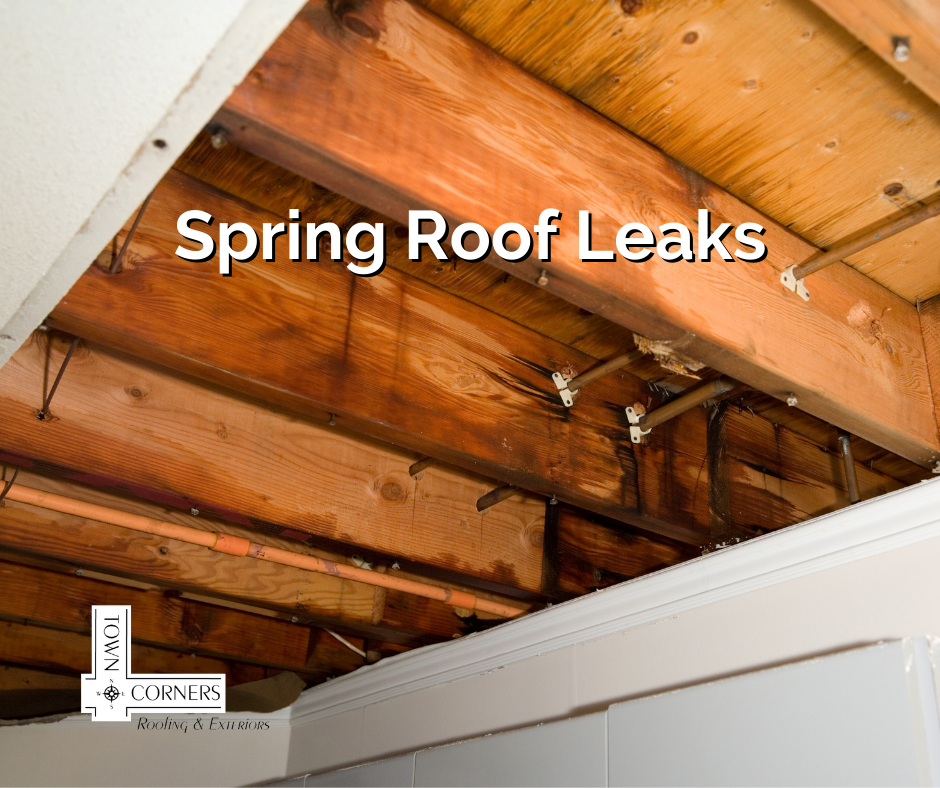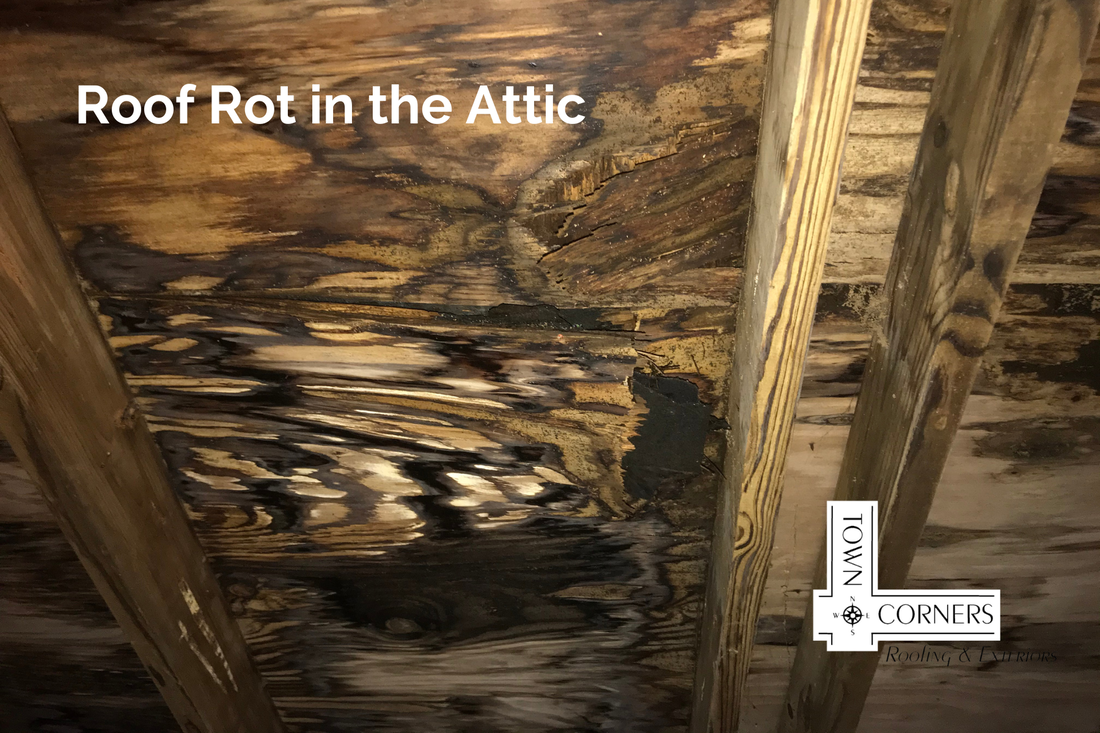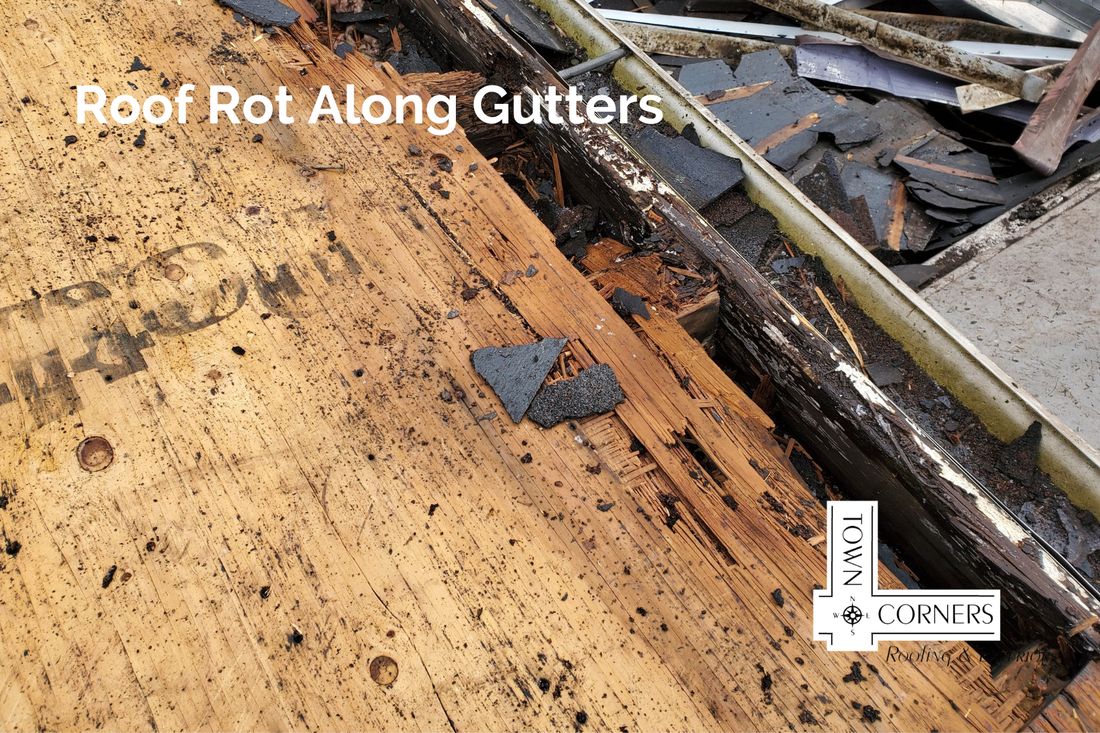|
If you want your roof to last as long as it was built to, you should know what aspects of your property may speed up your roof's deterioration. In this article, we'll go over how trees, location, and design affect the lifespan and condition of a roof.
Trees We recommend that tree branches stay at least ten feet from your roof. So, trim branches that are too close to your home. The branches can damage your roof's structure during an ice or wind storm. When branches hang over a roof, twigs and leaves can fall into the gutters, clogging them. Furthermore, twigs can form a blanket of debris on the roof and attract moisture. Moisture leads to roof rot. Location When it comes to your roof's lifespan, it matters where you live. · Coastal areas. Humidity levels are high in coastal regions, which can cause the metal to corrode and rust more quickly. Additionally, it increases the risk of mold and mildew growth, leading to wood and insulation rot. Moisture in the air invites lichen and algae to grow on the roof, which can lift and loosen shingles or cause leaks. When moisture is trapped on a roof, the deck can warp or expand, leading to interior damage. The constant exposure to wind and sand in coastal areas leads to erosion and pitting. In time, the shingles may crack, curl, or become brittle, reducing their effectiveness at keeping water out. · Hot, sunny locations. Hot days with prolonged sun exposure fade color and crack material over time. UV rays accelerate deterioration. · Storm alleys. Strong winds, heavy hail, snow, and ice threaten your roof. For example, tree branches and hail may puncture the roof, or wind can blow away shingles and tiles. Design Your roof's design can make your roof more vulnerable to damage. For example, darker colors may hold on to too much heat, causing cracking and accelerated damage. On the other hand, you need proper insulation that can hold enough heat to prevent ice accumulation. Flat roofs with small slopes may deteriorate faster because of slow water movement. If you're wondering about the lifespan of your roof or if it has acquired damage, get an inspection. So, if you live in West Michigan, call Town Corners Roofing and Exteriors at 616-772-9700 or fill out our contact form for a FREE estimate. April showers bring May flowers, or do they bring roof leaks?
Read this guide to be able to identify the signs of a roof leak by inspecting the interior and exterior of your house. Why Is My Roof Leaking During Heavy Rain? If you wait to repair a leak, even if it's small, you'll likely need a complete roof replacement. Because if left unattended, roof rot, mold, and mildew will develop. When the snow melts, your roof becomes vulnerable. During the winter, ice dams block water from the gutters, forcing it to run back up the roof and seep under the shingles. Ice can crack the roof membrane due to the freeze-thaw cycle. When ice liquefies, it can dislodge the flashing. Gutters can sag and pull away from hydraulic pressure. Now add Spring rain to the mix, and you’ve got a leak! How Do I Know If My Roof Is Leaking? Look for these indoor signs of a leak:
Search for these outdoor signals of a leak:
Keep your home safe. West Michigan's Spring thaw can affect your roof in many ways. So, if you notice any indications of a leak, request a FREE Roof Inspection today! You first notice discoloration on the ceiling in your kitchen. Maybe it’s just grease or condensation. You try to clean it off and notice it feels wet to the touch. Oh no! Your roof is leaking! Or maybe not. How is one to know?
For any household leak, keep in mind water flows down from the highest point, so the first step in the investigation is to check the space above the leak. If that’s your attic, inspect it during daylight so if there are any holes or cracks in your roof, you can see sunlight peeking through them. Also, bring a flashlight so you can see well enough to detect moisture above your problem spot, both in the attic ceiling and along the floor. Finally, look for pipes running above or near the leaky area. Inspect them to see if they are wet to the touch or the area around them is wet. Plumbing Leak? It is possible the problem is not your roof; it could be a pipe that has come loose, lost its seal, or is cracked. Pipe leaks don’t happen just in the attic. For example, if there is a bathroom above the leak stain, your toilet could be leaking, or the drain in the bathtub may not be sealed tight. Gutter Overflow? If you don’t find any obvious signs in the attic, observe whether the discolored area on your ceiling dries. Then, when it rains, check to see if it is wet to the touch again. This could indicate your gutters are clogged or leaking, which can spill over water into your walls and ceiling. Standing and overflowing water rots the wooden fascia the gutters are installed on, which creates leaks and even mold in your home. To check for cracks in your gutters, besides the visually obvious, look for streaks or stains on your siding behind and under the gutters, or if your house is painted, look for peeling paint in the same area. Roof Top? If you still need clarification on your persistent leaky spot, the top of your roof needs to be inspected for missing or loose shingles, air vents that have come loose, or improperly sealed flashing around the chimney or ventilation pipes. If you have ruled out a plumbing issue, have found your gutters have created roof rot, or would like a professional roof inspection, contact Town Corners Roofing and Exteriors to solve the leaky spot mystery and stop it! Are you wondering what’s causing your roof shingles to crumble? What does reparation entail?
This guide covers the ins and outs of roof rot: how it forms, how to recognize it, and how to repair it. Don’t wait! The longer your roof decays, the greater the danger to the residents of your home. Stop the Spread Early Roof rot threatens your safety. Mold can cause severe illness. In addition, roof rot compromises your house’s structural integrity. If you don’t stop the rot early, you’ll have to replace your roofing system, and worse, it may collapse. So, a yearly roof inspection is essential! Additionally, roof rot significantly decreases the curb appeal of your home. The ugly fungi on your roof will turn buyers away if you're trying to sell your house. Roof Rot Development Roof rot develops slowly and progressively. It starts with fungi that can only grow in moist, warm environments, like the wet, coated wood on your roof. The most common causes of the spread are improper ventilation, condensation accompanied by heat, and humidity in the attic. The Warning Signs Roof decay appears as “dry rot” or “wet rot.” Dry rot looks dryer and crumblier than wet rot. If you suspect deterioration, these are some more signs that it’s there:
Roof Rot Reparation Roof rot reparation is a complicated process. It’s risky to tackle independently because the damage will continue if you miss any mold. So, if you’re looking for that information, the process goes like this:
These kinds of repairs are not for the novice; they can be dangerous and cause more damage to your home than you intended. You will save a lot more time and money if you contact a roofer like Town Corners Roofing and Exteriors to do a professional roof inspection to diagnose and fix the problem. Piecemealing repairs to a problem like roof rot will not solve the root cause and only make it bigger. Picture it: a beautiful roof and a safe home. Get rid of that roof rot today! |
<--- BACK TO HOMEMORE ROOFING NEWSArchives
June 2024
|






 RSS Feed
RSS Feed
